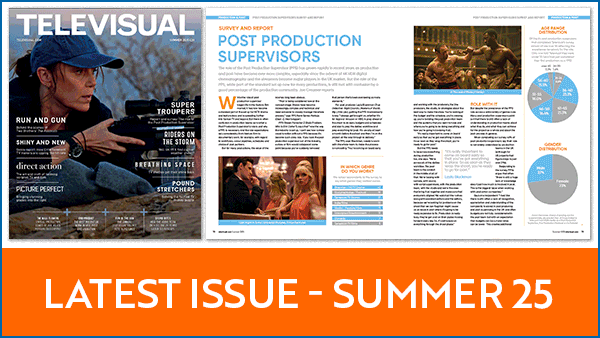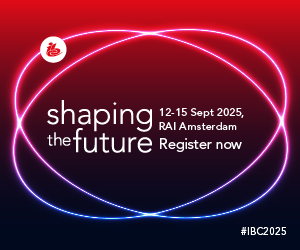Time was when IBC, NAB and similar tech trade events were the height of relevance for broadcasters and producers, but with the industry increasingly led by consumer behaviour on net-connected devices the massive Consumer Electronics Show in Las Vegas has become the bellwether of future media.
Innovations abound from companies trying to outmarket and outmuscle each other despite, or because of, the fact that global spend on CE products declined in 2012.
In forecasts unveiled by the Consumer Electronics Association and analysts GfK, the world market for CE devices will reach U$1.1 trillion by end of 2013, rising 4%, after dipping by 1% from U$1069bn to U$1058bn between 2011 and 2012.
That the market will grow at all is thanks to business in markets like India, China and Brazil and worldwide on the back of astonishing demand for smartphones and tablets.
Both of them combined will contribute a whopping 40% of total spend on CE devices globally in the coming year.
Shawn Dubravac, Chief Economist and Senior Director of Research at the CEA, described a ‘second digital age’ in which the bulk of activity on mobile devices is no longer about communication.
Entering a second digital age
The consequence of this, he said, was that smartphones and tablets were becoming hub devices around which lifestyle services were being curated.
An example is that is that your next TV is likely to be controlled by your phone. Panasonic has a deal with YouTube enabling YouTube videos to be controlled on Viera TVs via a smartphone app. Sharp highlighted a similar pact with Netflix.
Another part of the second digital age is being driven by sensors which are being packed into devices from fridges to wristwatches and phones. Sensors capture analogue information about the environment a person is in, render it digitally and with application of an algorithm can be translated into a new service.
Samsung for example was showing a Transparent Showcase, ostensibly just a piece of glass but one containing sensors capturing information about its context and to translate that into video. When an object was removed from behind the screen, so did the video.
Where smart TV once met simply internet connected, genuine inteligence is being built into networks and devices.
Another intriguing development in this regard was being demonstrated by Technicolor. Its project detects individual emotional responses to content by way of a sensor worn against the skin on the hand.
The resulting biometric data could be aggregated to provide studios with information to better target feature releases to demographics such as male or females or by country.
It could also be used in the editing process, by highlighting the emotional response of viewers to particular scenes and it could be used downstream as the basis of a recommendation engine for content and advertising based on the viewer’s mood.
In the latter scenario, Technicolor envisage home users simply placing their finger on a sensor embedded in the TV set which reads their mood and suggests relevant content for that moment – such as up tempo drama or low-key documentaries.
“This is the future of recommendation,” explained Philippe Guillotel, Scientist for Video Perception, Processing & Coding Lab Manager, Research & Innovation. “We are detecting your emotions from biological signals – it’s the same principal as lie detectors.
“Maybe in ten years there will be sensor on your TV set which will propose you directly relevant content according to your emotional state.”
As tablets and smartphones abound it’s clear that the second screen is becoming the first place that brands and content owners will go to reach the consumer.
“We are starting to see the consumer begin their engagement on the second screen and we will see manufacturers and then content owners adopting an omniscreen approach,” said Dubravac.
Large screens, more pixels
Those screens are increasingly being made with higher pixel density with an impact on video content that is still to be played out.
This is most obvious on the traditional TV. Over 50 Ultra-HD models decorated the showfloor although with prices from U$17000 these screens are not expected to be in huge demand in the near term.
The CEA predicts up to 25,000 Ultra-HD sets may be sold into the US market – to dealers not homes – in the coming year, only rising to 1.5 million or 4% of the US market by 2016.
“The bigger story is that this trend is happening on all screens,” said Dubravac. “We are seeing 1080p HD screens on smaller devices which has huge implications for the demand for hi-res content streamed over the web.”
Indeed Panasonic showed a glorious-looking prototype of a 4K 20-inch tablet pitched at applications for digital photo editing and architectural design. The attendant Panasonic spokesperson revealed that two 4K movies were loaded onto it and that unnamed studio execs had expressed interest.
“We are gathering feedback at the show and based on that we will take the project forward,” said the spokesperson.
Panasonic was among several vendors showcasing OLED screens, mostly still around the 55-inch mark as problems still exist in the manufacturing process of larger displays using this technology. The extreme high contrast ratio and night-sky deep blacks had people purring for developments in higher-dynamic range production to take full advantage of it.
Nonetheless the overall trend for larger screens continues and appears to be a worldwide phenomenon. In the US, sales of TVs of 20 inches or less in size have started to drop off as tablets arrive. Globally, the reverse is happening at the top end, where 60-inch screen sizes are on the rise.
The way we interact with the screen is changing too, most noticeably with gesture and voice control.
“We have had voice prompted interaction for some time but now we are starting to see developments with natural language recognition,” said Dubravac. “We will see a fundamental shift in voice control over the next couple of years.”
Asking rhetorically whether it was possible for technology to ‘know me’, the Samsung’s North American president Tim Baxter, unveiled the S-Recommendation engine which enables the discovery of personalized content based on previous viewings and user ratings.
“S- recommendation comes with voice interaction “making your TV almost human,” suggested Baxter with no hint of irony. “You can request your TV for movie selections, it acknowledges simple commands and understands natural language and full sentences and it even replies.”
3D growing silently
Did I mention that all these TV’s are 3D? No, neither did most vendors including some like Sony and Panasonic for whom 3D was all the rage at recent CES shows, but that doesn’t mean that 3D has fallen off the agenda. 3D may no longer be used to sell product, but for Sony “3D is as much a part of new Ultra-HD sets as the power button,” I was told.
"What we thought three years ago is that people would go into a store to buy a 3D TV," Bryan Burns, ESPN’s vp of Strategic Business Planning conceded. "What we found instead is that people wanted a really good HD TV that happened to also have 3D in it."
Indeed, Samsung almost flippantly unmasked a 3D 55-inch OLED panel which had the cunning knack of being able to display two full HD programmes at once viewable from the same screen at the same time provided viewers wear 3D glasses. These come with personal speakers built in, providing stereo sound for the corresponding programme.
It also had the world’s first single 3D lens which fits to the compact $750 NX300 camera capable of capturing both stills and 1080p Full HD video in 3D. The lens includes twin LCD panels which alternate – block the light – 30 times a second.
The notion that 4K is a replacement for 3D is also a myth that needs to be countered. “They have to go hand in hand,” said stereoscopic consultant and producer Buzz Hayes. “The message is that they are not competitive technologies.”
Tom Cosgrove, president of 3net, which is producing its first 4K series [Space], added: “4K makes 3D look that much better. We look at 4K production as a way to future proof our content.”
Ken Lowe founder and vp of engineering Vizio agreed: “Ultra-HD is good for 3D. We need cheap Ultra-HD panels since with them you get a full 1080 HD resolution on each eye which will drive development of autostereoscopic screens.”
At CES, no major manufacturer was showing any significant breakthrough in autostereo screens, which Dolby said were realistically three years away at least.
In any case, there is a consensus that autostereo is not the Holy Grail for 3DTV’s longevity. Instead the format’s success has to be about growing the volume and quality of content.
“If the content was good enough we would wear a welding mask,” suggested Hayes.
Apple TV: fear and inspiration
The gorilla not in the room was Apple and the continued, almost fevered speculation about its entrance later this year into the TV manufacturing space. Fear of dominating TV just as it took on the mobile phone category may be prompting a land grab of tech ideas, even though many won’t make it to market.
While OLED’s with their ultra-thin bezels and luxurious image quality perhaps herald the future of TV, CES2013 provided glimpses of a world beyond even that.
Researchers at Intel, Plastic Logic – a Cambridge University start-up – and a Canadian college produced arguably the show stopper in a paper-thin, flexible plastic screen that can keep track of where one screen is in relation to another. You could even put two PaperTabs together to create a bigger viewing surface and drag graphics between them.
This feature is not unique – Panasonic for instance was making a big play of the ability of users to transfer photos and videos from tablet to TV simply by touch and Sony promoted a similar development of one-touch transfer of music to and from multiple devices – but what is exciting was the realisation that one could simply roll a screen up in your pocket.
Its memory is small and no one is going to swap this for their iPad just yet but as the company said within five to 10 years, most computers, from ultra-notebooks to tablets, “will look and feel just like these sheets of printed paper.”
Adrian Pennington
Share this story

















